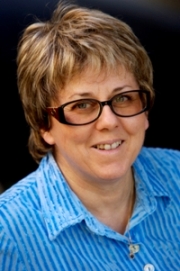Josiane Zerubia
Abstract:
Stochastic methods are now widespread in image analysis. Since the mid-nineties, many research works have extended the initial pixel based approach to the concept of object in order to deal with shape detection problems. In particular, stochastic models have shown good potentialities in extracting simple shapes. Generally, configurations of parametric
functions are sampled from probability distributions defined in a configuration space, Markov Chain Monte Carlo (MCMC) being one of the most popular families of samplers. In various application domains, the MCMC samplers are efficient for object extraction in large configuration spaces from any type of probability distribution. Models based on marked point processes (MPP) are among the most efficient stochastic approaches and have lead to convincing experimental results in various object detection applications. The marked point processes exploit random variables whose realizations are configurations of geometrical objects. After specifying a probability distribution measuring the quality of each object configuration, the maximum density estimator is searched for by MCMC techniques coupled
with a stochastic relaxation. Such processes are especially adapted to the description of complex spatial interactions between multiple objects.
In the first part of the talk, various examples of object detection using MPP are presented such as tree crown extraction, flamingo counting or boat detection.
Then, in the second part of the talk, a more recent approach is described combining a point process model with convolutional neural networks (CNN) to jointly detect multiple objects. The data term of the point process is learnt with CNN to better adapt to diverse environments and object types. The prior term is defined as usual for object detection with MPP. Several examples in urban and non-urban environments are shown using high-resolution satellite images.
Short Bio:

Josiane Zerubia has been a permanent research scientist at INRIA since 1989 and director of research since July 1995 (DR 1st class since 2002). She was head of the PASTIS remote sensing laboratory (INRIA Sophia-Antipolis) from mid-1995 to 1997 and of the ARIANA research group (INRIA/CNRS/University of Nice), which worked on inverse problems in remote sensing and biological imaging, from 1998 to 2011. From 2012 to 2016, she was head of AYIN research group (INRIA-SAM) dedicated to models of spatio-temporal structure for high-resolution image processing with a focus on remote sensing and skincare imaging. She is head of AYANA exploratory research group since 2020. AYANA is an interdisciplinary project using knowledge in stochastic modeling, image processing, artificial intelligence, remote sensing and embedded electronics/computing.
She was professor (PR1) at SUPAERO (ISAE) in Toulouse from 1999 to 2020. She received a Doctor Honoris Causa degree from the University of Szeged in Hungary in 2020, and 3 times the Excellence Award from University of Nice (UCA) in 2016, 2019 and 2020.
Before that, she was with the Signal and Image Processing Institute of the University of
Southern California (USC) in Los-Angeles as a postdoc. She also worked as a researcher for the LASSY (University of Nice/CNRS) from 1984 to 1988 and in the Research Laboratory of Hewlett Packard in France and in Palo-Alto (CA) from 1982 to 1984. She received the MSc degree from the Department of Electrical Engineering at ENSIEG, Grenoble, France in 1981, the Doctor of Engineering degree, her PhD and her ‘Habilitation’, in 1986, 1988, and 1994 respectively, all from
the University of Nice Sophia-Antipolis, France.
She is a Fellow of the IEEE (2003- ), the EURASIP (2019- ) and the IAPR (2020- ), and IEEE SP Society Distinguished Lecturer (2016-2017). She was associate editor of IEEE Trans. on
IP from 1998 to 2002, area editor of IEEE Trans. on IP from 2003 to 2006, guest co-editor of a special issue of IEEE Trans. on PAMI in 2003, member of the editorial board of IJCV from 2004 to March 2013 and member-at-large of the Board of Governors of the IEEE SP Society from 2002 to 2004. She was also associate editor of the on-line resource « Earthzine » (IEEE CEO and GEOSS) from 2006 to mid-2018. She was a member of the editorial board of the French Society for Photogrammetry and Remote Sensing (SFPT) from 1998 to 2020, and member-at-large of theBoard of Governors of the SFPT from 2014 to 2020. She has been a member of the editorial boards of the Foundation and Trends in Signal Processing since 2007 and of the IEEE Signal Processing
Magazine since September 2018. Finally, she has been member-at-large of the Awards Board of the IEEE SP Society since 2020.
She was part of numerous conference organizing and technical committees in the past, the most recent ones being the EarthVision workshops (general co-chair) at IEEE CVPR 2015 (Boston,USA) and 2017 (Honolulu, USA) and the GRETSI 2017 symposium (Juan les Pins, France). She is scientific advisor and co-organizer of ISPRS 2020 (virtual), 2021 (virtual) and 2022 congress (Nice, France) and technical co-chair of IEEE-EURASIP EUSIPCO 2021 (virtual, Dublin, Ireland).
Her main research interest is in image processing using probabilistic models. She also works on parameter estimation, statistical learning and optimization techniques, and artificial intelligence.